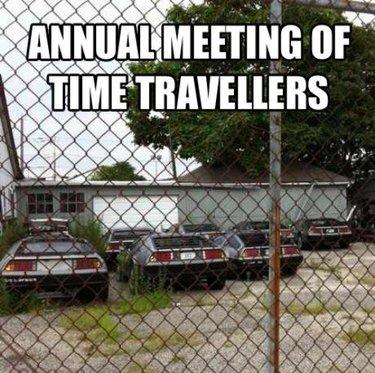Google, Uber, and Lyft: Why Google Must Win
The question isn't whether Google will enter the ride-share economy, but when. There is too much at stake for them not to.


Drones, Phones & More: What Tech Will Last A Century?
Drones, Phones & More: What Tech Will Last A Century? (Click image for larger view and slideshow.)
Yesterday it was reported that Google was entering the ride-share business and now today there are people doubting those reports. "Are they or aren’t they" isn't the right question. The only question is when. It makes too much sense for Google to enter the ride-share economy as part of a larger transportation strategy for the company, as well as its emphasis on localized services, and perhaps most importantly its efforts in Google retail.
The ride-share economy is fairly small potatoes for Google. The entire annual revenue for Uber is $2 billion per year and Lyft is significantly smaller. That's great, but for Google, with more than $66 billion in annual revenue, to want in on Uber's game, it either needs to see a lot more growth or it would need to devour the whole ride-share pie.
What Google is after is a way to connect its dots for multiple billion-dollar plays.
The first one is obvious. Google's most publicized experiment is the driverless car. Many have speculated that Google would compete with Uber with a driverless car taxi service. This idea has its advantages. Driverless cars never get tired. They work forever, and they can be more efficiently distributed than people who are using their free time to give a customer a lift.
[ Learn all about Ford's big plans for its mobility platform? Read Ford Mobility Plan Searches For Growth Beyond Cars. ]
But there's more, way more. The real money is in trucking (a $600 billion dollar industry in the US alone) and passenger cars ($4 trillion worldwide but that includes sectors that Google isn't planning on competing in) not to mention the courier business (nearly $100 billion). Why would Google mess around with a $500 million business when a chunk of these three giant industries is at stake?
Because it needs a proof of concept. Because the only people who are going to buy driverless cars when they first come out are daredevils and those who can’t drive themselves. Would you spend $30,000 on a driverless car before knowing if it was safe? Would you spend thousands of dollars retrofitting your existing car? Probably not. But would you spend $25 or $50 to sit in a driverless taxi to see what it was like? Not all of you, but many of you would. And eventually, you might find that trusting your life to Google is no different than trusting your life to a stranger with road rage.
Before consumers respond to the driverless car, they need exposure. Before trucking companies and couriers fill their fleets with autonomous trucks, they need to see a track record of safety. Pilot programs are one thing. Real world experience is another.
A taxi service also fits into Google's local strategy. An oft-overlooked portion of Google is its connection of Maps to local services and advertising. Locating a business on Google via ads or search and then being able to say "we could take you there" or "you can shop there now" brings an added level of use to a service. Once Google cars are ride-sharing you around town (or you own a car yourself), an internal network of business discoveries, ads for sale, and pushing of special offers turns Google Local from a nice service into a cash cow.
Speaking of shopping, the other major aspect of Google getting into ride-sharing is getting a bigger bite of the $4.7 trillion (in the US alone) retail industry. At first, the connection isn't so clear (beyond the local connection). But we all know delivery is becoming a major part of retail as brick-and-mortar stores struggle. Amazon and Google are both flirting with one-hour deliveries of products. Drones are a long shot, but cars, perhaps self-driving ones, are not so far-fetched. Even before driverless cars, a ride-share service seems like a great way to use Google Express drivers' time.
A ride-share service could be used to eliminate "dead runs" of vehicles delivering a product somewhere and not having anything to take back on the return trip. And people-driven cars coming before driverless cars might be a good way to build marketshare before driverless cars appear. At any rate, if Google solves the delivery problem, or helps another company like Amazon solve it, its chunk of the retail industry goes way up. Given Google's advantage in search, it could possibly increase its direct retail presence.
So forget Uber and Lyft. They aren't the targets. The targets for Google are much bigger. But to bag the big targets, the company needs a proving ground. Uber and Lyft just happen to be in the way of a $66 billion juggernaut. If it wants to, Google can win. It will win. The stakes are much bigger than a ride share. And because of that, it is only a matter of time before Google comes into this market.
Attend Interop Las Vegas, the leading independent technology conference and expo series designed to inspire, inform, and connect the world's IT community. In 2015, look for all new programs, networking opportunities, and classes that will help you set your organization’s IT action plan. It happens April 27 to May 1. Register with Discount Code MPOIWK for $200 off Total Access & Conference Passes.
About the Author
You May Also Like






